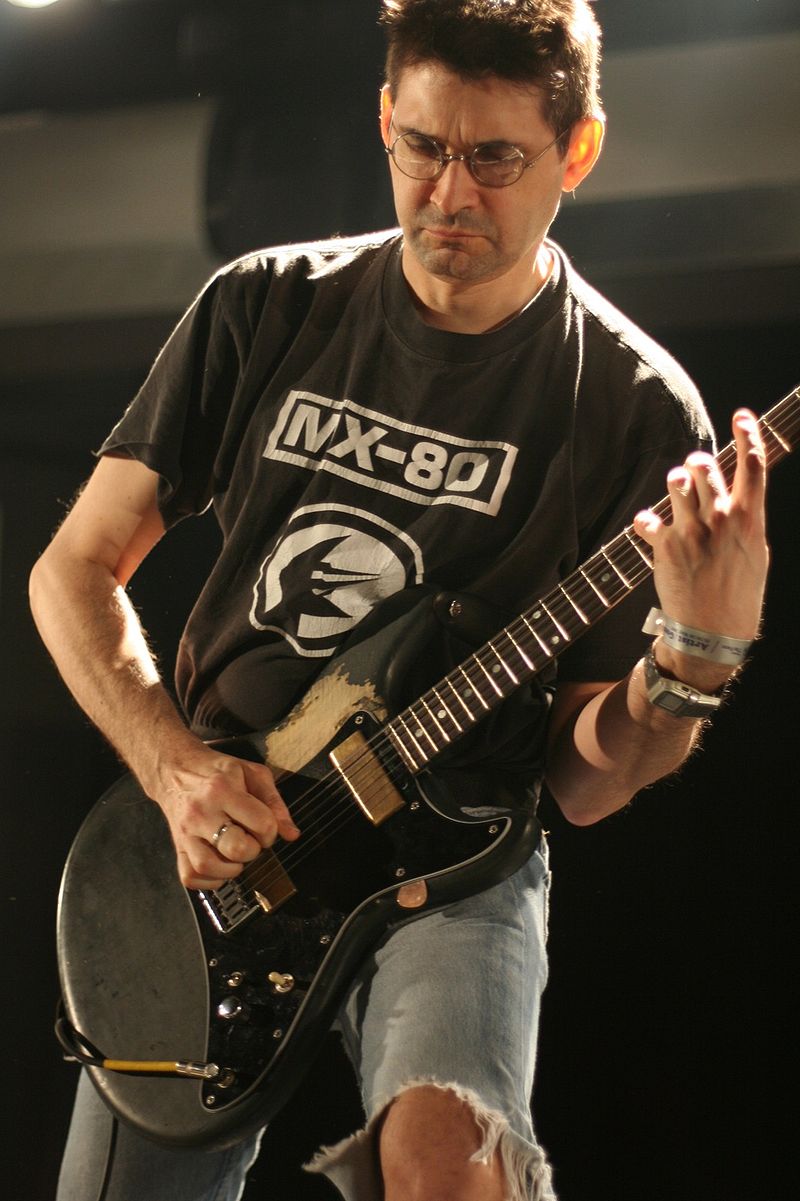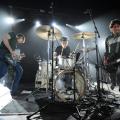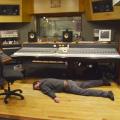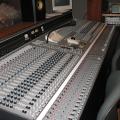 On Travis Bean Designs Facebook page, they posted some great photos of the Albini Signature TB500 guitar that they’re putting out. It’s a reproduction of the guitar that Steve Albini plays in Shellac. For those of you not too familiar with Steve Albini, he’s an incredible recording engineer who recorded Nirvana, Pixies, PJ Harvey and about a thousand other amazing artists. His studio, Electrical Audio, is based out of Chicago, IL. He’s also a member of Shellac, but prior to that – Rapeman and Big Black. Seeing that guitar has inspired me to write this post about some early and important interactions I had with Albini.
On Travis Bean Designs Facebook page, they posted some great photos of the Albini Signature TB500 guitar that they’re putting out. It’s a reproduction of the guitar that Steve Albini plays in Shellac. For those of you not too familiar with Steve Albini, he’s an incredible recording engineer who recorded Nirvana, Pixies, PJ Harvey and about a thousand other amazing artists. His studio, Electrical Audio, is based out of Chicago, IL. He’s also a member of Shellac, but prior to that – Rapeman and Big Black. Seeing that guitar has inspired me to write this post about some early and important interactions I had with Albini.
The 80s
When I was in high school in Montana (Kalispell), I was first introduced to Big Black on my junior year. It was the Headache EP, but soon after, it was Atomizer and Rich Man’s Eight Track. I was blown away with this “industrial” sound and it really scratched an itch. Back in those days, there was no internet and to learn about bands while in Montana, was insanely difficult – but quite rewarding when you were able to find a nugget or two about a band you’re in to.
I remember a friend of mine went to Seattle to see a punk show and brought back a Maximum RocknRoll zine and inside there, was a short little interview with Steve Albini, and I was blown away that he mentions that he grew up in Missoula, Montana. What? You can be from Montana, and actually be in a fantastic band and “make it”? That totally inspired me. Not necessarily inspired musically – but maybe it reinforced the fact you can do cool shit.. and be from Montana – which was hard to believe as a punk/post-punk kid in high school.
The 90s
In 1996 (or so), I finally got to see Shellac in the flesh. I moved to Missoula a few years prior and this was a show I was not going to miss. It was amazing, and it was also the first time I saw Travis Bean instruments. I was absolutely fascinated with these guitars – which led to an obsession (too big to talk about in this post). After the show, I was able to have a small conversation with Steve (as did many others) and it was cool that he was able to devote some attention to all the fan-boys out there.
The 2000s
In 2000/2001 I started a recording studio with Jimmy (who have done many demo videos on this site) called Bevel Studio. It was a “digital” studio, but we treated it like an analog studio. We used ADATs (first we had 16 tracks and later we bumped it up to 24 tracks). Everything was mixed on a Mackie mixer console to DAT – and no computer was involved during tracking/mixing – only mastering. It was an incredible experience – especially at that time. Missoula’s music scene was really flourishing and it was exciting to document that. I’m very proud of our studio looking back. We did the best that we could and it was super rewarding.
At this time, I thought I would try asking a little advice about our studio. The only engineer in my mind to ask was Steve Albini. I figured I would send an email and get nothing in return, but you never know right? Digging through some old file back ups, I actually found my emails from 2001 (not many can say that!)
Here is a partial snippet of my email to Albini:
Unfortunately, we are “small time” studio so we have 16 track ADATs. We’d love to have a Studer some day, but current budget restraints are preventing this. Our main goal is to record/document a large portion of the Missoula scene (we are up to 35 projects recorded). My partner and myself are always trying to improve with gear and technique, and it seems with every new project we get better and better. We felt that our last band project was the best we have done.. we also know there is massive room for improvement, and would like to take it to the next level. I thought it might be worth a shot to ask some advice from you.
Only a day later I got a thoughtful reply!
Well, there’s no magic bullet, and no short cut. You basically have to spend the next 10 or 15 years gradually improving your skills and your studio. Your “skills” are in part knowing what you can expect of your equipment and how to keep it running, so getting new equipment actually puts you back a little in your preparedness.Read everything written before 1980 about sound recording and acoustics. There was a lot of great stuff written after 1980, but the aesthetics of production begin to dominate the discussion around then, and that won’t help you out of technical trouble. Read voraciously, and experiment based on your reading. Read the most boring technical stuff, even if you don’t understand a goddamn word of it, because you might one day, and then you’ll remember where to look it up. Go to the U of M library — that’s where I found a lot of my early inspiration.As soon as anything you read starts giving you specific advice (…this microphone sounds “killer” on snare drum, …you should have the vocals in the middle, …don’t let the bass drum get too loud …) as though you can’t make such distinctions yourself, you should put that book down and find another one. What you’re looking for is nuts-and-bolts understanding of what sound does, and what the electrical analogue of it does in a circuit. I recommend the Master Handbook of Acoustics (F. Alton Everest) and the Yamaha Sound Reinforcement Handbook for starters.
Remember that I am a “little guy” too. I ran a studio out of my house for 10 years before I built Electrical Audio. It started as an 8-track, graduated to 24-track, and eventually took over my whole life. The whole time, I was also working in other studios, and I was able to incorporate the things I liked and (more importantly) avoid the things I didn’t like when I designed and built Electrical. You should definitely make a field trip to a “real” studio or ten. If possible, you should make records in them, under high-pressure situations. Only then will you have a good idea what you’ll need to do in your studio.
Again, Steve took the time. This email was extremely useful. I remember reading these paragraphs a few times during those studio years – there was a lot of wisdom between the lines – I especially loved – “anything you read starts giving you specific advice…” part. That really stuck with me, in more ways than one.
I’ve met Steve a few times since these early days – and oddly, I’ve never thanked him for this letter (or what he meant to me in my high school days). Maybe the next time we meet I’ll bring it up. Maybe not. Either way, an impact was made, and I really appreciate what this guy is all about.




